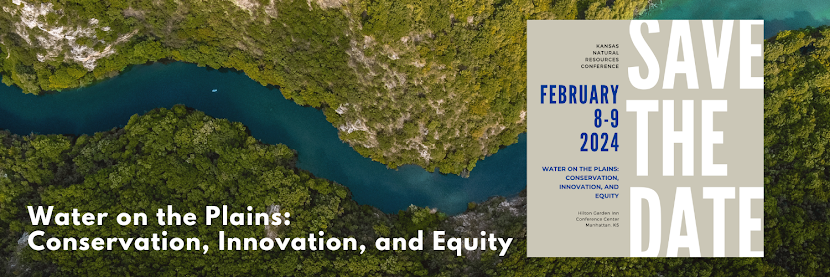Abstracts for oral and poster presentations are due December 5, 2023. Accepted oral presentations need to be completed and submitted prior to February 2, 2024 for uploading into topic sessions. Accepted poster presentations will be allowed a 4 ft X 4 ft space for each poster. Oral and poster presenters will be required to register for the conference.
Students giving oral presentations are eligible for one of 20 scholarships to waive the registration fee for the conference. Students with accepted oral presentations will receive a scholarship on an abstract first submitted, first served basis.
Students giving wildlife oral or poster presentations are also eligible to compete for student awards sponsored by the Kansas Chapter of The Wildlife Society. Students should include a ‘yes’ or ‘no’ statement indicating if they would like to enter the wildlife contest within the submitted online abstract form.
Direct questions regarding this call for papers to:
Keith Harmoney
Kansas State University - ARCH
1232 240th Avenue
Hays, KS 67601
785-625-3425 ext. 221
785-623-9499 cell
kharmone@ksu.edu
Instructions:
Provide the presenter’s email, name, affiliation, and presentation title (capitalize only the first letter of each significant word in the title), provide only names of other collaborators.
List affiliation in decreasing organizational order: Organization name, then department or group, and basic address
Provide the presentation type (oral or poster), if you wish to enter the student wildlife contest (yes or no), and the abstract body text (no more than 200 words)
Authors will be notified of the status of their submission via email by December 15, 2023.
ABSTRACTS ARE DUE DECEMBER 5, 2023
Abstract Example
Presenter Email: mmaidup@ksu.edu
Presentation Title: A Comparison of Stocking Systems for Shortgrass Rangeland
Presenter Name: Matt I. Maidup,
Collaborators Names: H. Janson, and J.R. Jagg
Presenter Employer/Agency/University: Kansas State University, Ag Research Center – Hays, 1232 240th Ave., Hays, KS 67601
I am a: Student Presentation Type: Oral Wildlife Contest Entry: No
Abstract: A comparison of animal gains and vegetation trends was made from 2002-2008 between a continuous season-long stocking (SLS) system and a modified intensive-early stocking system with late season grazing (IES 1.6X + 1) on shortgrass native rangeland of western Kansas. Average daily gains and total animal gain were different between the continuous season-long stocked and the intensive-early stocked animals during the first half of the grazing season. No difference was found between average daily gain and total animal gain for the continuous season-long stocked and intensive-early stocked with late season grazing animals during the last half of the season. Total individual animal gain and average daily gain was not different between the continuous season-long stocked and the intensive-early stocked system animals that were on pasture the entire grazing season. Total beef gain on a land area basis (85 vs. 68 lb/acre, P=0.008) was greater for the modified intensive-early stocked system with late season grazing with greater early animal densities. Changes in residual biomass and most key vegetation components at the end of the grazing season were not different between the two systems.
